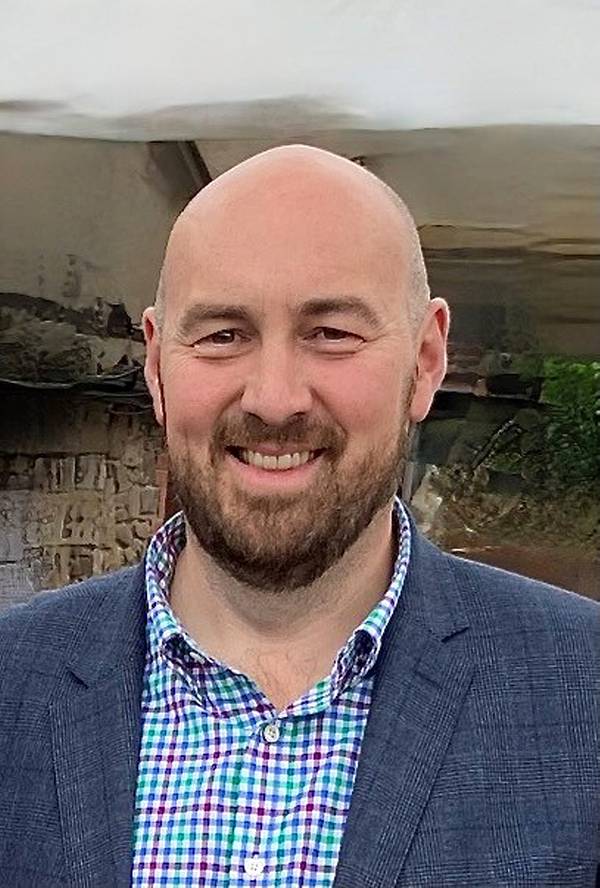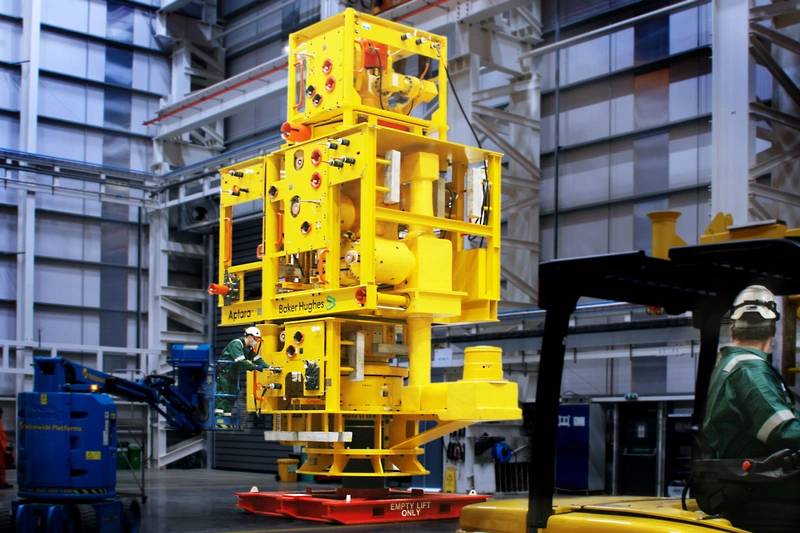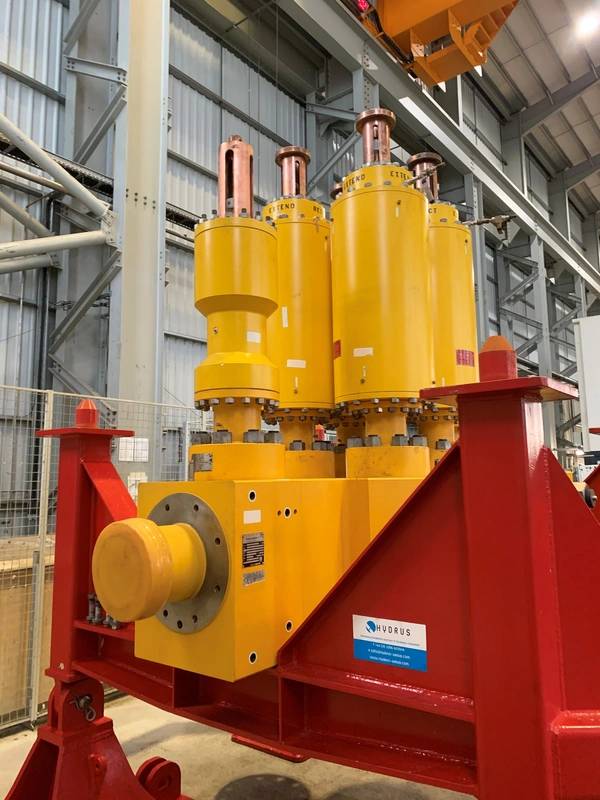
New for 2022 is Offshore Engineer's "CTO in Focus" which aims to gain insights from the C-Suite and the R&D lab of industry majors on the trends driving offshore energy production. Leading off is Gareth Davies, executive director of strategy and technology for Subsea Production Systems at Baker Hughes, who discussed customer demands, tech trends, COVID-19 impact, digitalization, and much more.
I've been with Baker Hughes for about eight and a half years. I’m a fixer by nature, so engineering is a great pathway to put a curious mind to work! I joined Baker Hughes in the engineering team; and was an engineering manager on the project delivery side for a number of years, then ran the engineering portfolio for project execution and systems engineering. The job with systems and technology started around six months ago. So, it's fairly new for me, but it's been a positive journey and we're already bringing to base some of the lessons we've learnt through the execution of projects into the product and system space that we are now managing.
We provide critical infrastructure to field developments which safely and efficiently produce the reservoir to a host facility. In partnership with our customers, we have developed a comprehensive range of equipment and solutions encompassing trees, manifolds, wellheads, umbilicals, workover, and tie-in systems which we then maintain over the life of the field. Our goal always is to accelerate time to production, reduce TOTEX and maximize recovery over the life of the field.
Our customers are looking for innovation; agility and meaningful ways to find solutions to their problems. Some customers are very specific about their needs and wants, but we've also got some customers that are being a little bit more hands off in terms of what they ask from us. We get a lot more requests of: "Hey, can you guys come and help us with how we define the system layout," for example, in this particular field area or basin and that means we can add a lot more in terms of our innovation to the field development options as well. This early engagement and vendor-led approach works well for us because we can lean on our extensive knowledge and experience to come up with the best outcome for the customer.
I think professionally we've gone through a number of cycles in terms of different geographies being affected more specifically and more critically, and we've overcome those difficulties through hard work and safe working practices. We've managed our businesses through what has been unprecedented times for everybody and I’m proud of how we’ve continued to execute for our customers. Our teams have pulled together to deliver.
There's a lot of negatives that are obviously prevalent that have come from COVID and they're obviously not to be understated because that was really terrible for a lot of people, but I think there's some positives we can take from it and while we all learned how to take ourselves off ‘Mute’ and everything, multiple times a day, I think it's really positive that we, in some cases, got to do things we wouldn't have normally done as well.
On a personal level, It's given me a little bit of time back to do some more exercise and it's given me some great time with my family and children as well.
 As oil and gas operators’ needs continue to evolve in response to challenging basins and dynamic market conditions, Baker Hughes has taken a unique life-of-field approach to create its Aptara subsea system – an integrated suite of 50% lighter, modular, optimized, and structured products.
As oil and gas operators’ needs continue to evolve in response to challenging basins and dynamic market conditions, Baker Hughes has taken a unique life-of-field approach to create its Aptara subsea system – an integrated suite of 50% lighter, modular, optimized, and structured products.
Photo courtesy Baker Hughes
Not so much working from home. I find that the one thing you can't buy in life is time, right. So, if you've got a longer commute or you spend a lot of time away, the thing that it's given me back is time and that's been a big positive in terms of an exercise regime or in terms of being able to spend time with my children. So, the family aspect, the exercise aspect has been very positive and not having to go to the office every day has been, what's enabled that. But we are in a different phase now and we're going back to sort of a hybrid working option and that provides us with a bit more of a balance.
Let's say we've got all the interactions with our staff and our teams that we need to collaborate [on] problem solving and then we've still got a few days where we're able to spend that time a little bit differently.
From an infill and tiebacks standpoint, we're looking at quite a lot of projects with our customers and working together to develop ways to maximize their efforts and the revenue that comes from the existing field development.
A lot of operators are starting to think about how they move towards new basins or how they gather most from the basins they already have and for the most part that means maximizing the returns from their existing assets. So, we are working quite a lot with our key customers around those things. What is interesting in the different context is the speed that the solutions are required.
We're finding a lot that things that would've been 22-month delivery in the past now is looking at 14 to 16-month delivery. So, the return on investment is very much focused around how quickly people can go from positioning an order to installing the assets.
It means we’ve changed how we think about designing and manufacturing our products. We have developed structured solutions that enable more repeatable manufacturing and less engineering on a repeatable basis. We have evolved our manufacturing processes to enable us to build a tree from order to exit, ex-works in 12 months. So that's something that was a great challenge in a positive way for us and forced us to think about how we can be as efficient as possible in that build process.
A lot of our assets have been installed for in excess of 20 years and whilst technology for more mechanically biased parts of the system like Christmas tree and manifold hasn't particularly moved on so extensively, the control system has evolved a lot more, being a more technology focused area. We're working with a few of our customers, to maximize their control system and if we can replace different parts of their system in order to give them better or lower latency or higher bandwidth for their communication systems. So, it's a bit of an evolving feat, but it's something that really is starting to be quite a prevalent part of our systems offerings as well.
We use a variety of approaches. For us, we're looking at how we digitize our planning, how we give our customers better insights into what we're doing in that regard. For example, EngageSubsea is a tool which allows our customers to have a window into our support and post-commissioning operations. So, there's a number of things we offer, but we're also thinking a little bit beyond that in terms of automated decision making. I don't think we're quite at the AI level, but we certainly come into more intelligent forms of, “if this, then that” type of design around chemical injection or valve closure for example.
It's got a number of connotations. For us, we're exploring two of those that I just described and hopefully we'll expand from both of those and work with our customers to evolve those solutions in time as well.
Not for me, I think the trust of the system is the key. […] It's something that different people tackle in different ways and I think that the safety features of our system will enable us to retain that control. It's not something that I sit in fear of. It's something that I think will bring us greater efficiencies, particularly when we think about how we can reduce carbon footprint and take the management and the people away from the assets that are in care. You know, we've got remote satellite communication links as an example where we've got backup communication systems running over remote Satcom, which enables us not to have so many people visiting the offshore assets, which is only going to be a positive for us in time.
The energy transition is a pathway toward transformation of the global energy sector from fossil-based to zero-carbon by the second half of this century. At its heart is the need to reduce energy-related CO2 emissions to limit climate change. Reducing emissions from of the energy sector requires urgent action on a global scale, and while a global energy transition is underway, further action is needed to reduce carbon emissions and mitigate the effects of climate change. Renewable energy and energy efficiency measures can potentially achieve 90% of the required carbon reductions. Baker Hughes is an energy technology company. As an energy technology company, we are aiming for emissions reductions rather than eliminating a particular fuel source. To support with emissions reductions and decarbonization, Baker Hughes is developing low and zero carbon technology. We are bringing all our core technology capabilities to enable a path to net-zero for energy and industry.
In addition, we're thinking more about our global footprint. We measure and understand how we think about things and delivery miles of our forgings that might come from the far east, and then they get machined in one location, then sent back for a build in a different location. So, we're thinking about that footprint angle. It's not just about lowest price or lowest cost, we're also changing how we do things like that as well. So, it starting to become a far more prevalent thing that we're managing as a business. We’re also looking at how we evolve our systems offerings to include different power sources, and how we can re-use installed assets or reduce the numbers of dedicated structures that we include in our system designs, so it impacts us in many ways – which is an important challenge for us to overcome.
Technology wise, we're looking at how we can position new products, materials and technologies to help us to provide better solutions for our customers. We're looking at how we think about our sensor solutions and our subsea communications, but I think the most important challenge is engaging our team. They've been away from the office for a long time, and it'll be really positive to see the innovation that comes back from having five people around the whiteboard, as opposed to having five people on Zoom with three children and a dog, and two of them tapped on “mute.” So, I'm really enjoying that myself (already) and I think that'll present us the greatest benefit also.
So, 2022 challenge is all about putting our customers right at the center of everything we're doing. We're spending a lot of time developing new ways to think about and fix their problems So that's a big focus area for us in 2022.
In terms of technology challenges, there are many, we’re thinking about composites in terms of structural elements at the moment, how does that impact. In terms of products, we’re releasing around six new products to be used in tendering this year, Aptara Tree, Compact Manifold, The Aptara Topsides Master Control System, and we’re also spending a lot of effort thinking and implementing ways to be more efficient in everything we do.
It could have an impact. We're looking at it fundamentally at the moment around our structures. So, we haven't had structural issues in terms of corrosion with our manifolds as an example, but that's where we are aiming our composite technology at the moment, in terms of material science, that'll be the first place we use it. After that, we'll then start thinking about how we can expand it and move forward.
“I think it's important to try and think about how we can reimagine our different parts of our system. We've been developing the Aptara tree for a couple of years now. So that is a strong product for us as a business and that's obviously on the mechanical side of life. We've also got a great product in the Aptara manifold as well. That's something that will emerge from our business this year, as well. In the control side of the business, I said earlier, we're looking at our sensoring solutions and the type of bandwidth that may be required in the future.
I think when you look at the whole system aspect of what we've been doing, the data is just becoming an emergent, most valuable thing that will come from the Subsea Production System potentially. So, that's something that we're trying to work as an enabler and it's something that I think will be a strong part of system designs going forward.
Baker Hughes’ Aptara Subsea System
As oil and gas operators’ needs continue to evolve in response to challenging basins and dynamic market conditions, Baker Hughes has taken a unique life-of-field approach to create its Aptara subsea system – an integrated suite of 50% lighter, modular, optimized, and structured products.
Engineered to be a TOTEX-lite family, Bakers Hughes says that this next-generation portfolio challenges conventional subsea systems to make installation, production, and intervention simpler and more efficient.
The individual products, comprising trees, well heads, pumps, flexibles, and connectors, are all building blocks of the system, which is configurable to both greenfield and brownfield developments.
With 40% reduced carbon footprint and 50% less weight than traditional deep-water tree systems due to its modular horizontal build, the Aptara lightweight compact tree supports faster field development, lowers TOTEX and enables increased value from the reservoir, according to Baker Hughes.
Per the oilfield services provider, the Aptara modular compact manifold achieves faster delivery and reduced risk and costs through standardization which “dramatically reduces cycle time, cost and footprint by using pre-engineered manifolds.”
Baker Hughes says that the Aptara SFX well head solution enhances well intervention activities even in late-life, ensures the longevity of field operations, and enables operator confidence.
As the world’s first subsea multi-phase pump without a barrier fluid system, the Aptara Modular Compact Pump reduces topside footprint by 30% and can adapt dynamically to changes to well streams, no matter the condition.
Newest to the family, Aptara Composite Flexibles are a hybrid of traditional flexible pipe designs. Using an innovative carbon-fiber component as an armor against high pressures, these composites deliver predictable and stable hydrodynamic performance over the full product life cycle.
Reducing connection time by over 30%, Aptara subsea connection systems (FLX360 multi-quick connection system and HCCS-L Lightweight Horizontal Clamp Connection System) can complete simple and reliable make up/ break outs in just 90 seconds, Baker Hughes says. Photo courtesy Baker Hughes
Photo courtesy Baker Hughes


